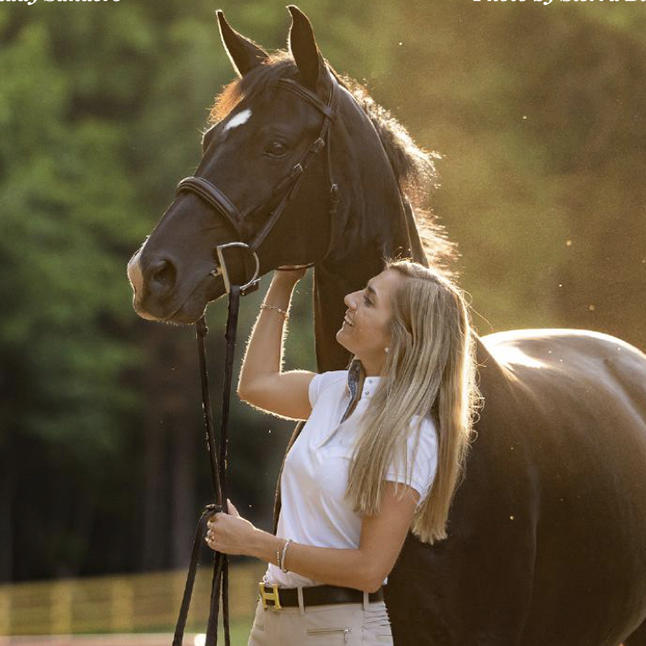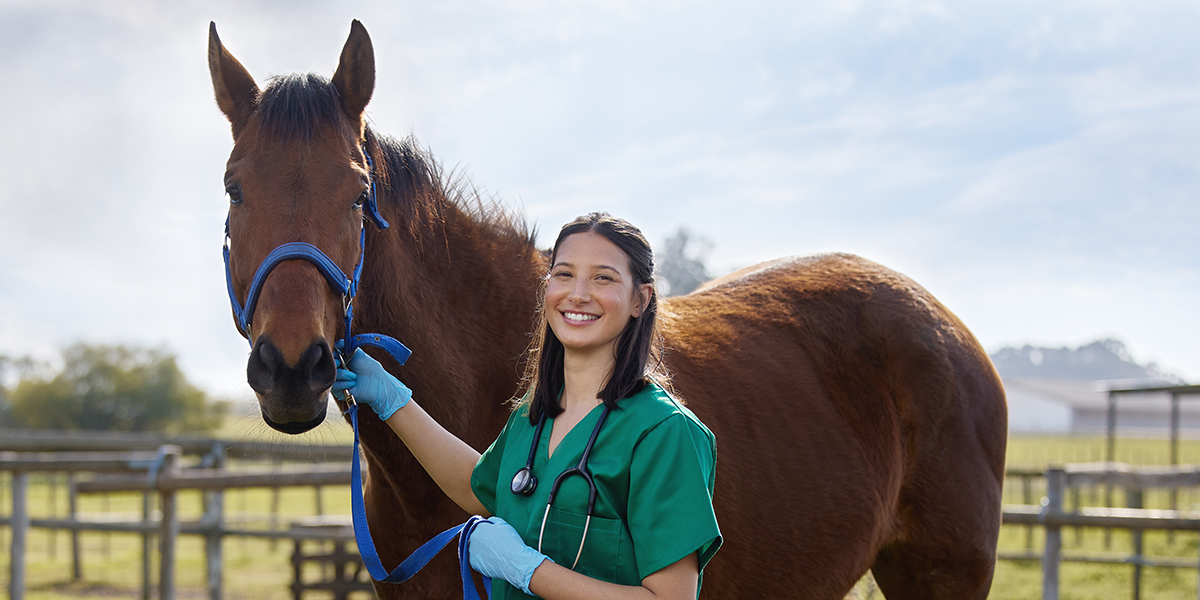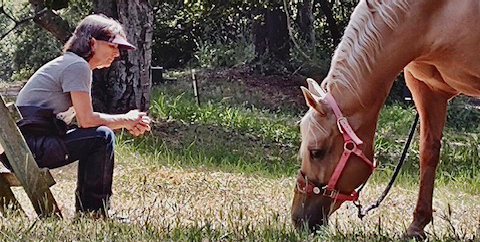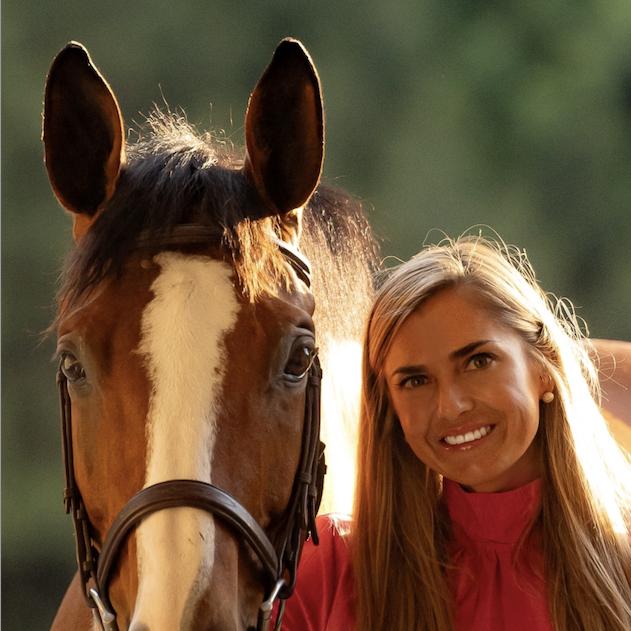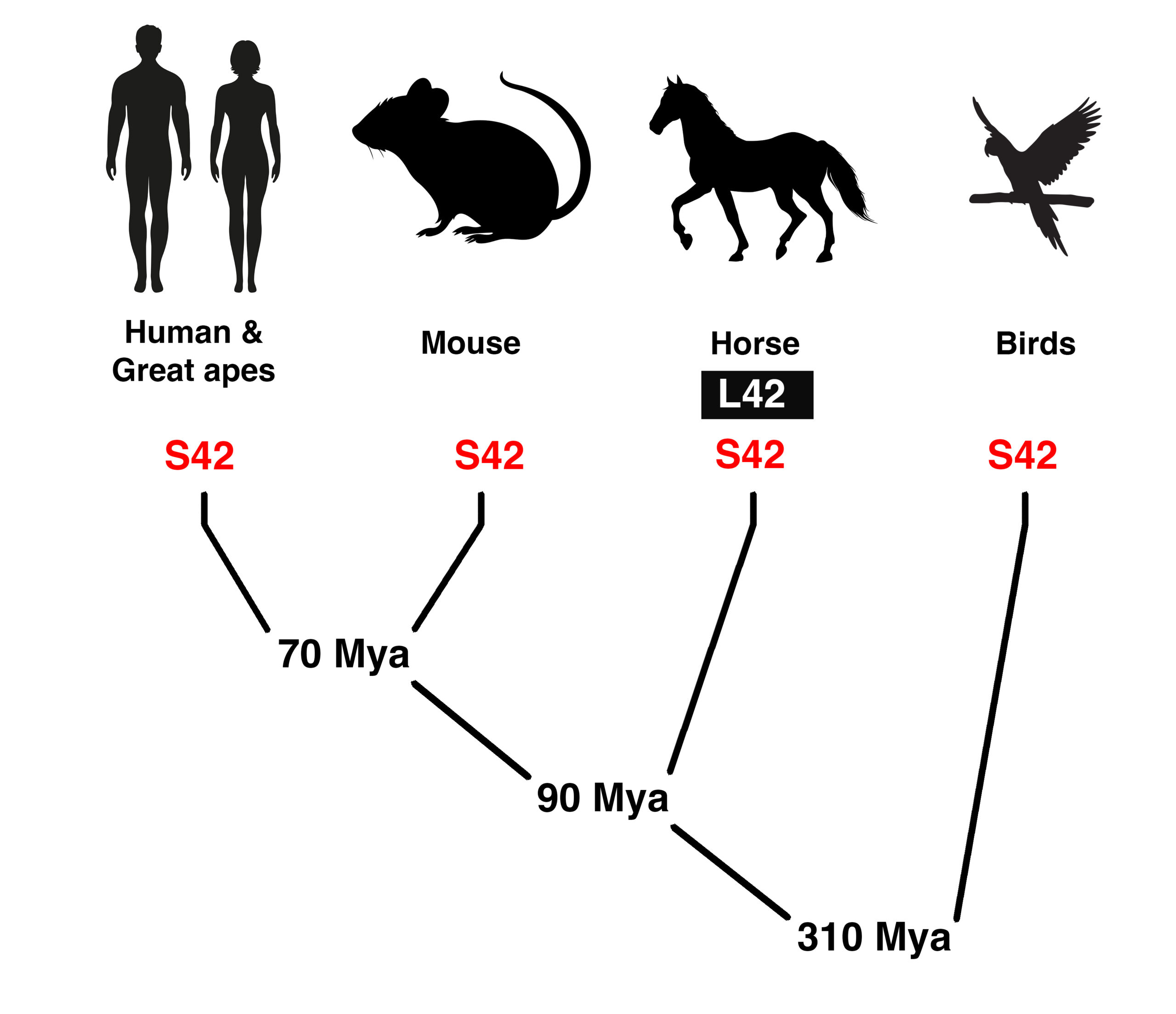Our blog
Resources and insights
The latest industry news, interviews, technologies, and resources.
Blog categories
News
EquiSeq’s DNA Test Changes the Landscape
ALBUQUERQUE, NEW MEXICO – October 14, 2025 The October 2025 issue of Equine Business Magazine published an article on EquiSeq, describing its DNA test as changing the landscape in managing horse health. Madison Ruddy Sanders, founder of Elete Equine Marketplace and a member of EquiSeq’s Board of Directors, wrote the article, based on conversations with Paul Szauter, EquiSeq’s Chief Scientific Officer; Stephanie Carter, an equine nutritionist; and horse owners Wendee Walker and Charlene Shingleton. EquiSeq’s patented DNA tests identify horses at risk for a muscle disease before they develop symptoms. Unlike muscle biopsy, EquiSeq’s DNA test is noninvasive, only requiring a hair sample. The article is one of the outcomes of EquiSeq’s recent outreach to horse owners. Madison Sanders and Paul Szauter have interviewed horse owners via Zoom, offering the opportunity for horse owners to write guest blog posts for EquiSeq’s website. They are currently planning public webinars to address horse muscle disease.
Blog
An Elephant to Discuss in the Equestrian Community
I’m an amateur dressage rider, Animal Reiki Practitioner, and trail enthusiast looking for my next happy, healthy trail partner. That means I’m horse shopping, which should be an exciting experience! As of Summer 2025, I tested 19 horses for PSSM2/MIM as part of my pre-purchase process. These horses came from all backgrounds registered and grade. Draft crosses. Iberians. Morgans. Mustangs from the same herd. Even a grade Haflinger. Over half of the horses I tested carry one or more variants of PSSM2/MIM. The breeder of my affected horse, insisted the genes don’t guarantee clinical signs. Other skeptics say, “correlation doesn’t equal causation,” as if that explains away the welfare concerns many owners are seeing firsthand. Maybe if your horse is a companion, or breeding stock not in work, you’ll never know. If they’re only used for breeding, and get trimmed twice a year, the cracks in health might stay hidden. But once they’re asked to work, the signs of pain are revealed. Stiffness. Resentment. Resistance. And acting like just being a horse is hard. Many are dangerously explosive. A grouchy “pain face” might be the only clue. These horses struggle to trailer and settle into a new environment as well….
Blog
Muscles as Messengers: How Muscle Myopathies Are Revolutionizing Equine Health Care
After two decades in the veterinary medical field, I’ve witnessed countless treatment protocols, diagnostic advances, and management trends. Yet nothing has transformed my understanding of equine health quite like muscle myopathies. These complex conditions—PSSM1, MIM and its variants, MFM, MYHM, and so forth—have become unexpected catalysts, revealing fundamental truths about health that extend far beyond the horses they affect. What makes these conditions so instructive isn’t their complexity, it’s their honesty. Unlike many equine ailments that respond to pharmaceutical intervention, muscle myopathies strip away our comfortable reliance on medical management. They demand something more fundamental: a return to species-appropriate nutrition, natural movement patterns, and collaborative care that honors the whole horse. When Medicine Meets Its Match In my years as an equine nutrition professional, I’ve consulted on hundreds of muscle myopathy cases. The pattern is strikingly consistent: owners arrive having tried every supplement, every medication, every promise of a solution. Their horses continue to struggle. Not because the veterinary care was inadequate, but because these conditions require something medicine alone cannot provide. This is where beauty emerges from the burden. When conventional treatments offer minimal relief, we’re forced to examine our husbandry practices and whether our convenient systems serve the…
News
EquiSeq Announces Issuance of U.S. Patent to Detect Genetic Variants Causing Muscle Disease in Horses
ALBUQUERQUE, New Mexico – September 2, 2025 – EquiSeq Inc, a biotechnology company developing DNA tests for inherited muscle disease in horses, announced today that the United States Patent and Trademark Office has issued U.S. Patent Number 12,398,426, “Methods of Detecting Inherited Myopathies in Horses.” The patent includes claims covering specific genetic mutations that predispose to muscle disease in horses, allowing the design of a rational breeding program to reduce the incidence of equine muscle disease. The patent, and EquiSeq’s other patent, U.S. Patent Number 16/088,247, “Method of Detecting Inherited Equine Myopathy,” describe the use of DNA testing to identify damaging genetic variants in six different horse genes. The patented technology has been in commercial use since 2017, with thousands of horses tested. The test is sold directly to consumers, including horse owners, breeders, and veterinarians. The technology has been licensed by Generatio GmbH, a company in Germany that provides equine genetic testing for Europe. DNA testing is a well-established technology that works reliably on all DNA, regardless of the source. In the United States, EquiSeq uses allele-specific PCR, a rapid test that returns results quickly enough for a pre-purchase exam. In Germany, Generatio uses an Illumina BeadArray, a comprehensive test for tens of thousands of variants….
Blog
PSSM/MIM: The Dream Stealer
When you’ve exhausted all your resources and drained your back account, trying to find what is wrong with your horse, then what do you do? You dig a little deeper, research longer and keep asking questions. You get told you are crazy, your horse has got the better of you, and mostly you are making stuff up. You consider euthanasia but the good days come and you are left feeling hopeful and yet still frustrated. Here is the story of my beloved Tuned up Whiz it, aka Whizzy. Her current diagnosis is PSSM type 2 via biopsy and n/P2, n/Px n/MYHM via EquiSeq DNA testing. I met Whizzy the fall of 2009, she was 4 years old. Her price was way out of my range due to her breeding and intense training to be a reining horse. Whizzy just could not spin in one direction fast enough to meet the needs of the owner. She needed to move her fast as she had already bought another 2 year old. I took her on trial and I had x-rays that revealed some changes in her right front hoof, my farrier thought it no big deal. I made a super low offer…
Blog
K1 Allele of COL6A3
Introduction This blog post explores the K1 allele of the equine COL6A3 gene, which encodes Collagen type VI alpha 3 chain. Portions of this blog post serve as additional sources of information to supplement the COL6A3 Gene Page. The K1 allele of COL6A3 carries a missense mutation, shown below. The protein model XP_014595871.3 was used to assign amino acid positions. Figure 1. Alignment of partial COL6A3 protein sequences from horse, compared to the K1 variant. The position of the amino acid affected by the substitution is highlighted in red. We present data to support the hypothesis that the K1 allele of COL6A3 is damaging. The K1 variant (G1976A) substitutes an alanine for a glycine. The affected amino acid is in the triple-helical portion of COL6A3. The general sequence of this region in all collagens is GLY-X-Y, where every third amino acid is a glycine. The X and Y amino acids are generally poorly conserved. In the formation of the collagen triple-helical region, the glycine residues are points of contact between helices. Glycine has the smallest R group of any amino acid (a hydrogen atom). Other amino acids in these positions interfere with triple helix formation to some extent. For further discussion,…
Blog
P3 allele of FLNC
Introduction This blog post explores the P3 allele of the equine FLNC gene, which encodes filamin-C. Portions of this blog post serve as additional sources of information to supplement the FLNC Gene Page. The P3 allele of FLNC carries two missense mutations, shown below. The protein model XP_023495410.1 was used to assign amino acid positions. Figure 1. Alignment of partial FLNC protein sequences from horse, compared to the P3a and P3b variants. The positions of the amino acids affected by the two substitutions are highlighted in red. We present data to support the hypothesis that the P3 allele of FLNC is damaging. For the P3a variant (E794K), the substitution of lysine (positively charged) for glutamic acid (negatively charged) is a somewhat conservative substitution. For the P3b variant (A1248T), the substitution of threonine (polar uncharged) for alanine (hydrophobic) is a nonconservative substitution. Evolutionary conservation provides convincing evidence that the P3 allele of FLNC is damaging. We use public data to show that the reference allele of P3a (E794) is highly conserved across 389 species of mammals, birds, reptiles, amphibians, and fish representing 29 unique sequences of the 41-amino acid query sequence centered on the position of the E794K allele, covering about 400…
News
Experienced Equestrian Joins EquiSeq Board
Albuquerque, New Mexico, USA June 20, 2025 EquiSeq, a leader in developing genetic tests for horses, is pleased to announce the appointment of Madison R. Sanders to its Board of Directors, effective immediately. Ms. Sanders is an experienced equestrian with a proven track record in sales and marketing. She is a lifelong hunter/jumper equestrian and a driven entrepreneur. She left the corporate world, where she worked in sales and marketing, to found Elite Equine Marketplace, a digital platform tailored to the hunter/jumper community. “We are thrilled to welcome Ms. Sanders to our Board,” said CEO and Chief Scientific Officer Paul Szauter. “Madi combines decades of experience as an equestrian with a record of success in sales and marketing. In her new role, Ms. Sanders will increase the adoption of EquiSeq’s DNA test among horse owners, breeders, and veterinarians.” “I am honored to join EquiSeq at this time of opportunity,” said Ms. Sanders. “I look forward to working with the Board to achieve its goal of improving horse health through genetic testing and breeding programs grounded in science.” EquiSeq is a leading provider of genetic tests for horses. Since its founding in 2015, the company has been committed to identifying genetic…
News
Science Team Meets to Discuss Projects
Four members of EquiSeq’s Scientific Advisory Board. Left to right: David Nannemann, Paul Szauter, Jesse Young, and Jeremy Edwards. Four members of EquiSeq’s Scientific Advisory Board met on June 2 to get acquainted and to discuss ongoing research projects. Science team members Jeremy Edwards (University of New Mexico), Jesse Young (TriCore Reference Laboratories), David Nannemann (Rosetta Design Group), and Paul Szauter (EquiSeq) attended. Jeremy Edwards will lead the effort to screen whole genome sequence data for potentially damaging variants using an extensive gene list developed by Paul Szauter. David Nannemann will assess the effects of current and future variants on protein structure. Jesse Young will explore the possibility of adding ancestry testing to EquiSeq’s offerings. The meeting marked the first time that some members of the Scientific Advisory Board had met each other. They agreed to continue to meet in person from time to time to supplement email and Zoom meetings. Learn more about EquiSeq’s team on our Team Page.
Blog
P4 Allele of MYOZ3
Introduction This blog post explores the P4 allele (S42L) of the equine MYOZ3 gene, which encodes myozenin 3. Portions of this blog post serve as additional sources of information to supplement the MYOZ3 Gene Page. We present data to support the hypothesis that the P4 allele of MYOZ3 (S42L) is damaging. The substitution of leucine (hydrophobic) for serine (polar uncharged) in the P4 allele of MYOZ3 is a nonconservative substitution of a chemically dissimilar amino acid. Evolutionary conservation provides convincing evidence that the P4 allele of MYOZ3 is damaging. We use public data to show that the reference allele is completely conserved across 448 species of mammals and birds representing 155 unique sequences of the 41-amino acid query sequence centered on the S42L allele, covering over 310 million years of evolutionary history. P4 allele of equine MYOZ3 Evolutionary conservation provides evidence on whether the P4 allele of MYOZ3 is damaging. In this approach, predicted MYOZ3 protein sequences are compared among a number of different species. This method, applied to mammals and birds, is shown below. A 41 amino acid segment of the protein sequence of equine MYOZ3 (XP_005599348.1), centered on the position of the variant, is shown below. This sequence is compared to…
